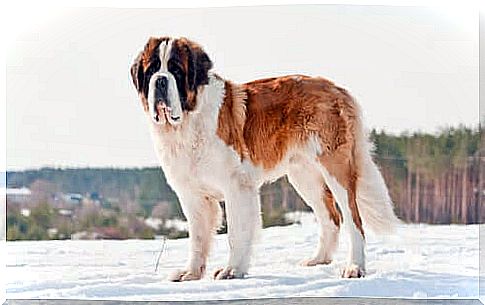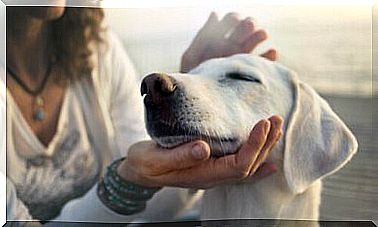The Saint Bernard Dog: Care And Characteristics Of The Most Beloved Giant

We know him thanks to films like Beethoven (and all his sequels) and for his resume as a rescue dog par excellence. In this article we will delve a little more into the life and characteristics of the Saint Bernard dog, a true gem in the world of pets.
The fascinating story of the Saint Bernard dog
The Saint Bernard dog, also called Bernhardshund or Bernhardiner , is German. It is a cattle dog native to the Swiss Alps, and more specifically from the mountain pass of the Great St Bernard Pass, which is 2,469 meters above sea level.
This species has been talked about since 1695. Throughout history, its main function has been to be both a guard dog and a rescue dog for travelers who got lost in the most inhospitable corners of the mountains.
Napoleon Bonaparte’s soldiers extended its reputation as a rescue dog around the year 1800, and its popularity has only grown since then. In 1867, Holligen’s Heinrich Schumacher began documenting the genealogy of this species, and in 1884 the Book of Canine Genealogical Records was opened.
The Swiss St. Bernard Dog Club was founded in Basel in 1884. The breed was officially recognized as Swiss in 1887 and, from that moment on, became the Swiss national dog.

Characteristics and morphology
The International Cynological Federation classifies this breed in group 2 (Pinscher, Schnauzer, Molosser and Swiss Cattle Dogs). There are two varieties of the Saint Bernard dog:
- Short-haired variety
- Long-haired variety
Both have the large size characteristic of this breed. Their imposing and muscular appearance contrasts with the affability of their character. As a pet he is cheerful and calm, although at the same time he is alert, to protect loved ones. It doesn’t bark much, but it does have a tendency to drool.
As for its proportions, the minimum cross height is 70cm in males and 65cm in females. The maximum, however, is 90 in males and 80 in females. The weight fluctuates between 55 and 90 kilograms.
The base color is white with light or dark red spots. A black shading can also be seen on his body. The markings considered mandatory according to the breed standard are white on the chest, legs, tip of the tail, the stripe above the muzzle, the star and the neck.

Exercise and care of the Saint Bernard dog
This large breed needs to start training carefully from an early age. In puppies, care must be taken not to strain their skeleton: before they are subjected to intense exercise, their bones must be fully formed.
Once adults, this breed requires a great deal of daily exercise to keep fit. Given their great intelligence, combined with their considerable size, it is important to train them from an early age, so that they learn to obey their master.
However, it is precisely from its large size that the problems associated with this type of breed arise. The Saint Bernard dog, in fact, is predisposed to suffer from:
- Gastric torsion
- Hip dysplasia
- Epilepsy
- Entropion.









